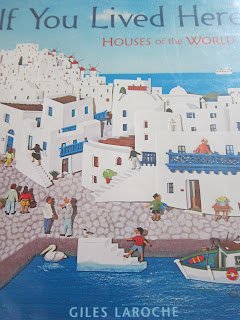 Ketzel, the Cat Who Composed. This story, based on real events about a cat who "composed" a piece of music for a competition, is utterly delightful. I love how the illustrator captures the real composer's frustration, the cat's mischievousness, and the hustle and bustle of New York City. By the way, ketzel means cat in Yiddish, and ketzele (pronounced KETZ-el-uh) is the diminutive. You can even buy - separately - a CD of the piano competition at which the piece was played.
Ketzel, the Cat Who Composed. This story, based on real events about a cat who "composed" a piece of music for a competition, is utterly delightful. I love how the illustrator captures the real composer's frustration, the cat's mischievousness, and the hustle and bustle of New York City. By the way, ketzel means cat in Yiddish, and ketzele (pronounced KETZ-el-uh) is the diminutive. You can even buy - separately - a CD of the piano competition at which the piece was played.Tricky Vic: The Impossibly True Story of the Man Who Sold the Eiffel Tower, written and illustrated by Greg Pizzoli. How clever to use fingerprints for the faces of the "bad guys!" This unique book about a con man is great for older children.
In a Village by the Sea by Muon Van, illustrated by Amy Chu. Lovely illustrations show a Vietnamese fisherman's family waiting for him to come back from the sea. The story-within-a-story (or painting-within-a-painting) element has readers questioning what is real.


Americanine: A Haute Dog in New York. Kebbi's energetic pencil drawings capture New York's frenetic energy better than (almost?) any I've seen. The conceit that the narrator is a French dog who is visiting New York for the first time is unnecessary (any ignorant visitor would do; e.g., an alien, or, even better for a children's book, a young child) except to create the occasional pun ("haute dog"), the art more than makes up for it. And there's the Orthodox Jew who appears in almost every drawing... why? Are there any other recurring characters? I suspect spending a bit more time with this book would pay off.
Imaginary Fred. Have you ever attended a concert where two imaginary friends were the musicians? Have you ever introduced your imaginary friend to your friend's imaginary friend? This take on imaginary friends is unique and hilarious. The sight of the baffled audience listening to music played by the imaginary friends (or perhaps they only hear silence?) is priceless. There are quite a few new books about imaginary friends this year (We Forgot Brock! is another, and a big hit with my students), but this is my favorite.
 Wait. This one is perfect for the toddler-preschool crowd. Mommy's in a hurry, but look at all that she's missing out on! A beautiful take on how children live - and force their parents to live - in the moment. Portis's style reminds me a bit of Lauren Castillo's here, especially as this book is set in New York City like much of Castillo's work. I wish I'd included this one in my mock Caldecott.
Wait. This one is perfect for the toddler-preschool crowd. Mommy's in a hurry, but look at all that she's missing out on! A beautiful take on how children live - and force their parents to live - in the moment. Portis's style reminds me a bit of Lauren Castillo's here, especially as this book is set in New York City like much of Castillo's work. I wish I'd included this one in my mock Caldecott.A Fine Dessert: Four Centuries, Four Families, One Delicious Treat by Emily Jenkins, illustrated by Sophie Blackall. Showing how one dessert - blackberry fool - has been made in different ways throughout time not only serves as a timeline of kitchen technology (bundle of twigs - whisk - mechanical mixer - electric mixer), but also shows societal changes throughout history.
 Home, written and illustrated by Carson Ellis. A palette of brown, blue, and red showcases all kinds of homes, from the real (apartments, wigwams, boats), to the imaginary (a home on the moon with a view of Earth, the home of a Norse god). Pair it with A House is a House For Me for a fun discussion of houses and the completely different types of art (one stark and simple; one extremely detailed) in each book.
Home, written and illustrated by Carson Ellis. A palette of brown, blue, and red showcases all kinds of homes, from the real (apartments, wigwams, boats), to the imaginary (a home on the moon with a view of Earth, the home of a Norse god). Pair it with A House is a House For Me for a fun discussion of houses and the completely different types of art (one stark and simple; one extremely detailed) in each book.The Little Book of Big Fears. A clever take on alphabet books (the missing letters spell GUTSY and BRAVE) that is perfect for your little worrier.
Swan: The Life and Dance of Anna Pavlova. This poetic biography of Anna Pavlova has the reader enter a winter wonderland.

See You Next Year. The pleasures of visiting the same vacation spot year after year, thrown into greater relief by one change - the making of a new friend.
The Tea Party in the Woods. In black-and-white-and-shades-of-gray with touches of red and yellow, this book tells the sotry of Kikko as she tries to bring a pie to Grandma through the woods. Sound familiar? Not quite! Betsy Bird wrote the perfect review.
























